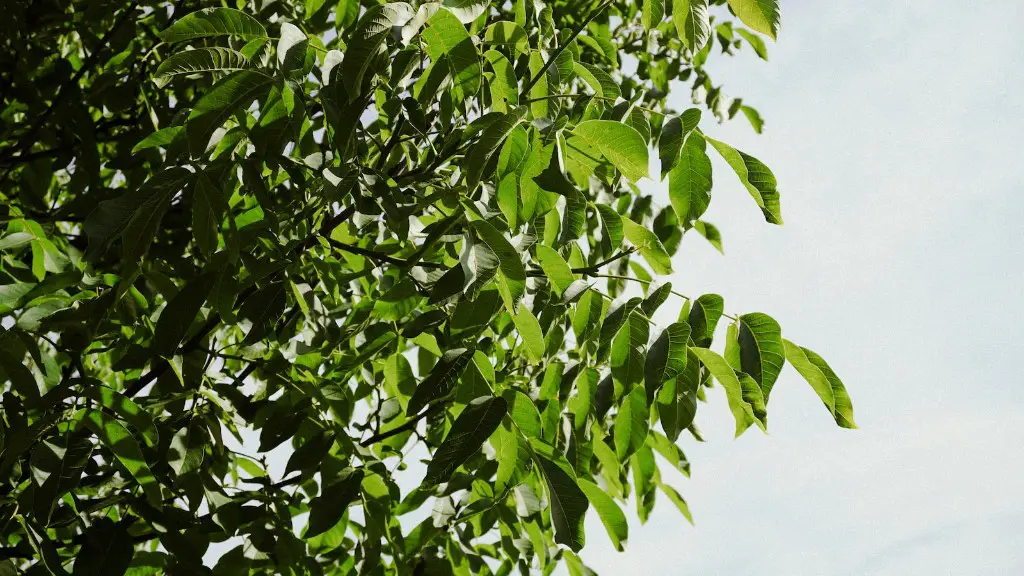Avocado Trees Indoors: Challenges And Benefits
In recent years many homeowners have expressed an interest in growing avocado trees indoors. Avocados are popular in many cultures, and with their increasing popularity, the demand for fresh avocados has brought the idea of growing them indoors to the forefront. Although this may seem like a simple proposition, it is important to understand the challenges and benefits of adding an avocado tree to your house or apartment.
The main difficulty with growing avocado trees indoors is the size of the tree and the amount of light it requires. The full-grown avocado tree can reach heights of between 25 and 40 feet, making it hard to accommodate in a home. Additionally, avocado trees need bright light for at least six hours each day in order to produce fruit. Without enough light, the tree will not grow correctly.
Furthermore, some avocado trees are sensitive to temperatures moving too high or too low and need to be monitored carefully. This can be a difficult task in a home environment, where temperatures might fluctuate too frequently. Finally, the trees need proper drainage and soil that contains enough minerals to nourish the tree.
Despite the difficulties with growing avocado trees indoors, there are some benefits to owning one. As previously mentioned, having a fresh supply of avocados at hand can be convenient. Additionally, an avocado tree can add aesthetic value to your home and make an interesting conversation piece. Last, these trees are long-living and have some medicinal properties. Some believe that avocado leaves can be used as herbal remedies for a variety of ailments such as headaches and digestive issues.
In order to successfully care for an avocado tree indoors, owners need to ensure that it gets the right amount of light and is kept in a temperature-controlled environment. In addition, the soil needs to be consistently monitored to make sure it has the necessary nutrients to support the growth of the tree. Lastly, it is important to be aware that avocado trees by nature tend to attract pests and need frequent pest control.
Watering And Fertilization For The Avocado Tree
For optimal growth, it is important to provide the right amount of water to the avocado tree. The amount of water needed depends on a variety of factors such as the time of year and the temperature present in the home environment. As a general rule, the tree should be watered twice a week and the soil should be kept moist.
Fertilization is also necessary in order to thrive. The best time to fertilize an avocado tree is during the spring growing season when the tree is still young. A balanced fertilizer such as 8-3-9 can be used or a slow-release fertilizer can be applied every three to four months. It is important to use the right amount of fertilizer, as too much can be harmful for the tree.
Pruning Methods For The Avocado Tree
In order to get the most from your avocado tree, it necessary to prune it yearly. Pruning helps the tree maintain its shape and encourages the growth of new and healthy fruits. Additionally, it helps control the tree’s size and allows for better air circulation and sunlight penetration.
First, remove dead branches, diseased buds, and weak stems and then thin out the canopy for healthy growth. Other pruning techniques such as heading back and pinching are also beneficial. Heading back is a method in which small branches are cut back and pinching helps to control the size of the tree. It is best to prune an avocado tree in the late spring or early summer months when the tree is still young.
Ongoing Care And Maintenance
It is important to keep an avocado tree in an area with bright light and a temperature that is between 55 and 70 degrees Fahrenheit. Additionally, the tree will need to be monitored for bugs and diseases. The best way to do this is to inspect the leaves and trunk regularly, as any signs of distress should be addressed immediately.
Furthermore, it is essential to ensure the tree has enough water and nutrients. As previously mentioned, avocado trees need two to three months’ worth of fertilizer to keep them healthy and free from pests. And, of course, regular watering will be essential for the tree to stay strong and healthy.
Harvesting The Fruits
The harvesting process for an avocado tree is an exciting one, as the fruits typically appear from May to October. In order to successfully harvest the fruits, careful monitoring of the tree is crucial. When the avocados begin to change color and have a little give, they are ready to be picked. If left on the tree too long, the fruits might over-ripen and become dry.
Advice For Planting An Avocado Tree Indoors
When planting an avocado tree indoors, it is important to remember that the tree needs frequent water and care. Additionally, a proper container should be chosen that allows for sufficient drainage. It is recommended to use a pot with a drainage hole and to fill the pot with good quality soil mix.
In order to ensure the tree stays healthy, it is essential to maintain consistent temperatures and water levels. Furthermore, periodic repotting may be necessary to provide the tree with the proper set of nutrients it needs. The tree should also be provided frequent doses of fertilizer to ensure it stays healthy and has enough nutrition.
Transplanted Avocado Trees
Transplanting an avocado tree can also be an option for individuals wanting to grow the plant indoors. Although this might seem like an easier process, it is important to remember that the new environment may be too different from the tree’s natural one and can impact its growth. Additionally, the tree may become stressed and develop diseases from the change.
Therefore, the transplant should only be done by an experienced professional who understands how to properly reposition an avocado tree. This process requires extra care and attention for it to be successful.
Container Growing Avocado Trees
Container growing is another option for those interested in growing avocados indoors. This is often a preferred method for those in colder climates since it is more temperature-controlled. Additionally, due to its smaller size it is ideal for those with short amounts of space.
When choosing a pot, it is best to select one that is large and deep, as larger pots are better suited to the long roots of an avocado tree. Additionally, the pot should have multiple drainage holes and should be filled with soil that is nutrient-rich. Lastly, the tree needs to be monitored carefully and watered frequently, as the pot may dry out quickly.
Pros And Cons Of Growing Avocado Trees Indoors
Although growing an avocado tree indoors has several benefits, such as having access to fresh avocados, there are some drawbacks as well. As discussed, growing an avocado tree requires that it receives enough light and some species are sensitive to temperature fluctuations. Furthermore, the tree needs to be regularly monitored and pruned for it to stay healthy.
In conclusion, growing an avocado tree indoors can be challenging yet rewarding. It requires careful attention to ensure the tree receives the proper nutrition and sunlight in order to maintain its health. Nevertheless, it can provide a great conversation piece and fresh avocados on demand.

